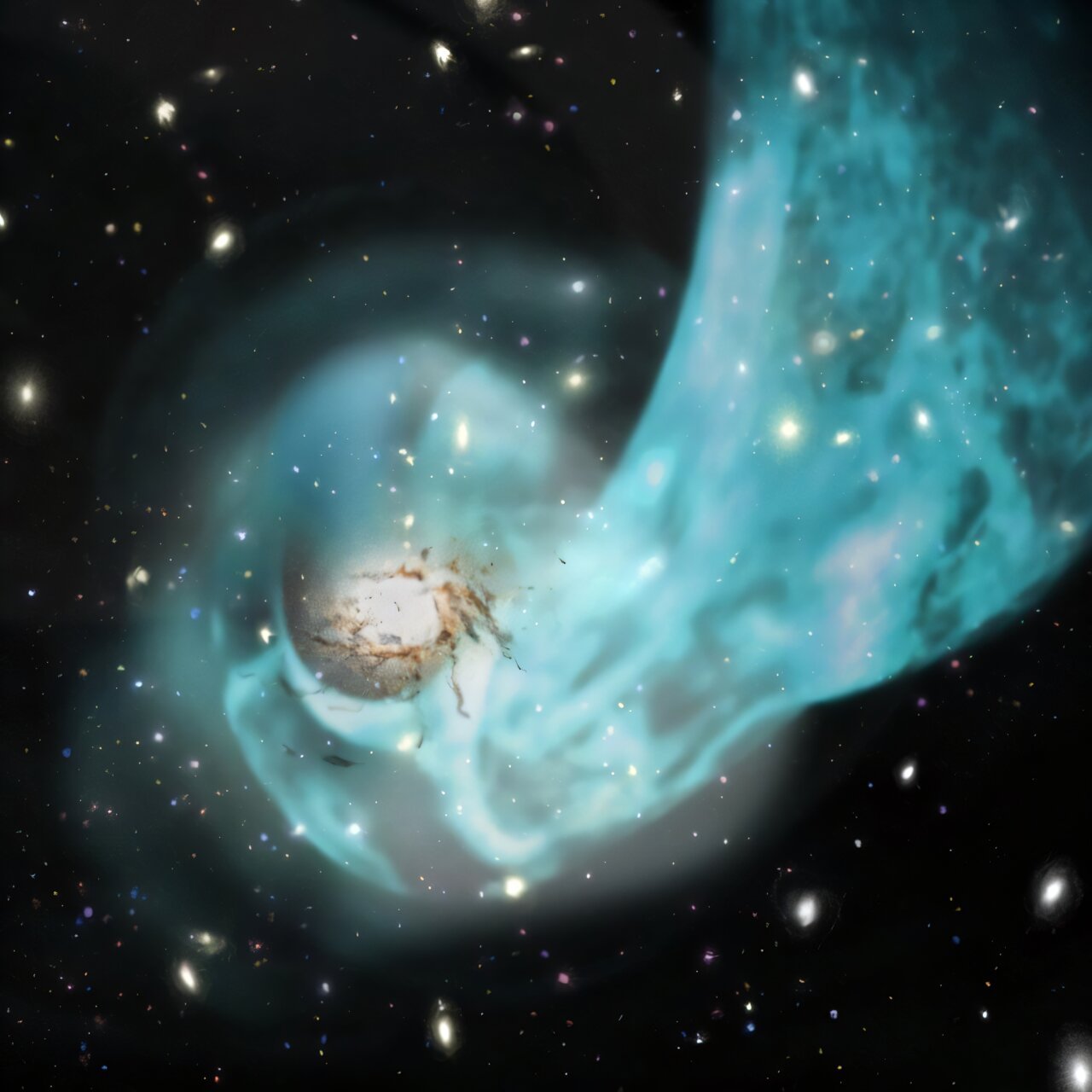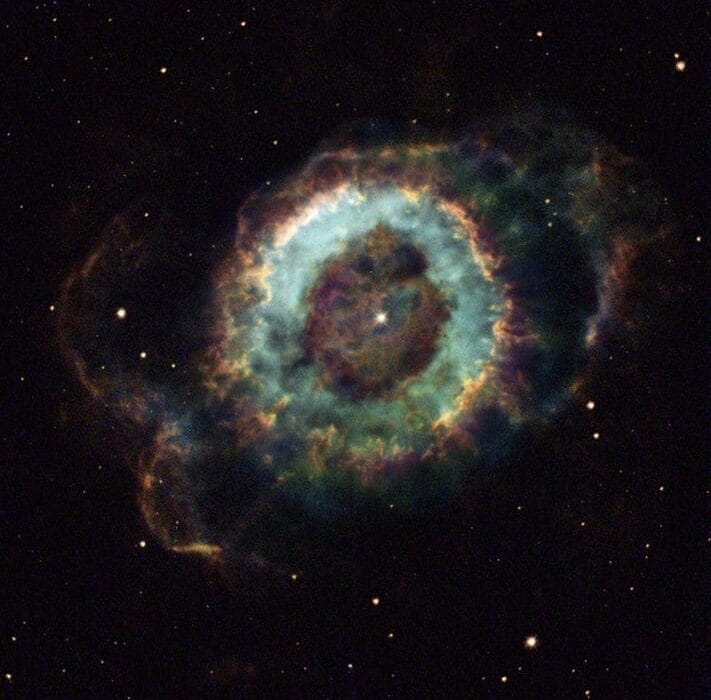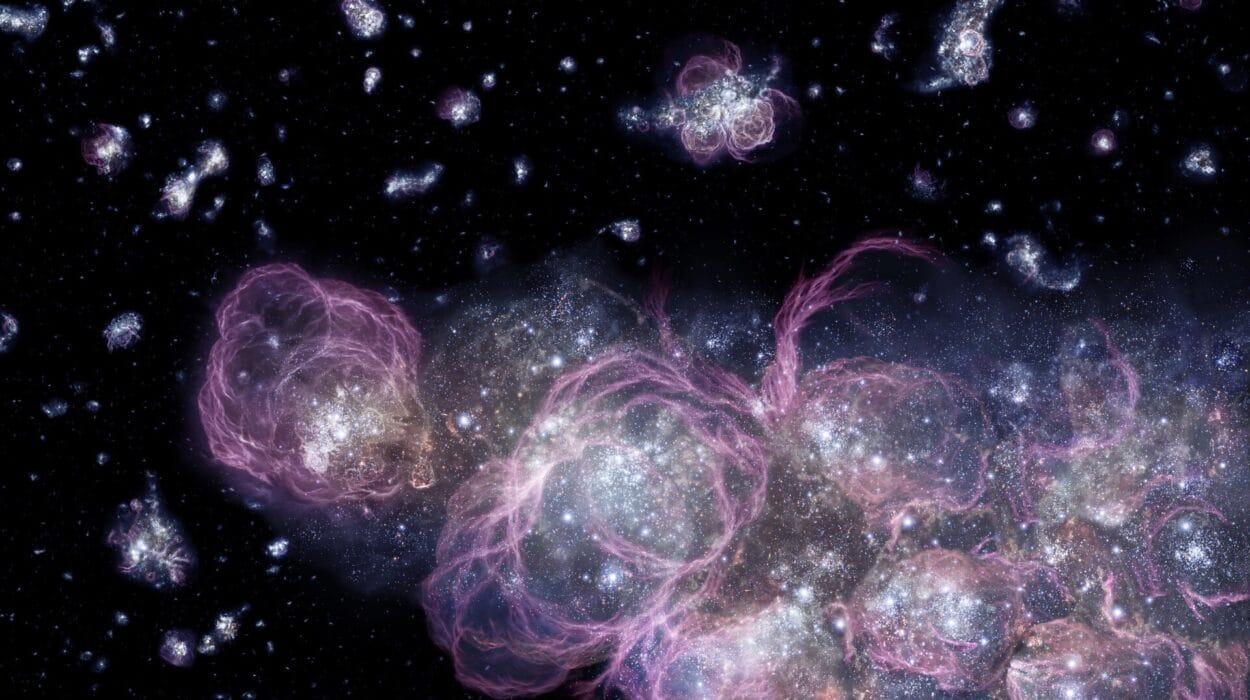Astronomers have made a monumental breakthrough in understanding the dynamics of galaxy clusters, with the discovery of flows of hot gas in the core of the Centaurus Cluster. This finding, made possible by the XRISM satellite launched in 2023, solves a longstanding puzzle in astrophysics about the mysterious forces keeping the gas in these clusters hot, despite the expectations of radiative cooling. Through innovative use of X-ray imaging and advanced numerical simulations, scientists have confirmed a new phenomenon that reshapes how we view the behavior of galaxy clusters and their evolution.
A Long-standing Mystery in Cluster Dynamics
For years, astronomers have been trying to decipher the mechanisms that allow galaxy clusters to maintain their hot, X-ray-emitting gas despite theoretical predictions that the gas should cool over time. The intracluster medium (ICM), a hot gas composed mainly of hydrogen, resides within the cores of galaxy clusters and typically emits X-rays due to the high temperatures in the millions of degrees. This high temperature is maintained by the energy in the form of gravitational potential energy, transferred through the accretion of matter from smaller galaxies.
However, the gas in these clusters should cool down due to radiative cooling. As the gas emits X-rays, it loses energy and, over time, would be expected to cool significantly, a process that should lead to the gas condensing and forming stars. The problem, however, is that this doesn’t seem to happen in many clusters. The question has been: How do galaxy cluster cores remain so hot over billions of years despite this expected cooling?
The Role of Galaxy Cluster Mergers
The answer to this question comes from the latest observations by the XRISM collaboration, an international team of scientists using the XRISM satellite, which was launched by the Japan Aerospace Exploration Agency (JAXA). The collaboration has provided a revolutionary set of X-ray measurements, capturing the very movement of gas in the Centaurus Cluster, which includes the central galaxy NGC 4696.
What the team found is nothing short of extraordinary. They discovered a bulk flow of hot gas traveling at speeds between 130 and 310 kilometers per second in the line-of-sight to Earth. This movement, which they detected for the first time, is indicative of a phenomenon known as sloshing, where the gas in the cluster’s core moves back and forth in response to mergers between galaxy clusters. Such sloshing is akin to the motion of water in a sloshing container, and it plays a critical role in maintaining the gas’s temperature.
XRISM’s Groundbreaking Capabilities
The core of this discovery lies in the cutting-edge technology of XRISM’s Resolve spectrometer, which boasts unparalleled precision in spectroscopy. This device has allowed astronomers to map the velocities of gas at different locations within the cluster, providing new insights into the dynamics of hot gas in galaxy clusters. By comparing these measurements with numerical simulations of galaxy cluster collisions, the team was able to identify the gas movement as a result of sloshing, validating a long-hypothesized model of cluster behavior.



The simulations and data comparison were led by Professor Yutaka Fujita from Tokyo Metropolitan University and Associate Professor Kosuke Sato from the High Energy Accelerator Research Organization. They found that the movements of the gas are not random but are instead driven by gravitational interactions between galaxy clusters. The gas in the ICM behaves like a fluid, experiencing bulk flows as clusters collide and merge, causing it to “sloshes” in a rhythmic pattern.
Solving the Cooling Problem
The discovery of gas sloshing provides a crucial piece of the puzzle regarding the long-standing mystery of radiative cooling. The observed sloshing behavior suggests that the movement of hot gas plays a role in transporting energy throughout the cluster. When gas sloshes, it effectively redistributes energy within the cluster, preventing the gas from cooling too quickly. This process of mixing helps maintain the gas’s high temperature and X-ray emission, ensuring that the cluster core remains hot and active despite the cooling expected from radiative losses.
Before this discovery, astronomers were puzzled by the fact that the gas in the cores of clusters like Centaurus remained hot for far longer than the theoretical cooling timescales. The sloshing of gas offers a compelling explanation by showing how large-scale flows of gas allow energy to be redistributed and prevent cooling. This finding offers one of the most significant solutions to a problem that had baffled astrophysicists for decades.
A New Window into the Evolution of the Universe
This breakthrough does more than just explain the hot gas dynamics in the Centaurus Cluster—it offers a new lens through which to understand the formation and evolution of galaxy clusters. Collisions and mergers between clusters, driven by dark matter and gravitational interactions, are thought to play a critical role in shaping the large-scale structure of the universe. Understanding how these processes work on such a massive scale is key to unraveling the history of cosmic growth.
The Centaurus Cluster, one of the most studied clusters in the universe, serves as a natural laboratory for studying the processes that govern galaxy and cluster formation. By observing sloshing gas, scientists gain insight into how energy is transported across vast cosmic distances and how galaxy clusters maintain their structural integrity over billions of years.
With the XRISM mission still in its early stages, this discovery represents just the beginning of what could be a series of revelations about the universe. As the satellite continues its observations, astronomers anticipate even more detailed measurements that could help refine our understanding of the physics governing galaxy cluster dynamics. The XRISM mission is expected to provide new information on black hole formation, the nature of dark matter, and the broader processes that shape the structure of the universe.
Implications for Future Research
The findings from the XRISM team are not only a victory for the study of galaxy clusters but also for the broader field of astrophysics. This work highlights the importance of combining cutting-edge technology with theoretical models to better understand the complex interactions that occur in the cosmos. As other missions and telescopes, such as the James Webb Space Telescope and the Chandra X-ray Observatory, continue to provide complementary data, the puzzle of how galaxy clusters evolve will become clearer.
In particular, these insights into the movement and behavior of gas within galaxy clusters will have far-reaching implications for cosmology. The mechanisms by which galaxy clusters grow, merge, and evolve directly influence our understanding of dark energy, the mysterious force driving the accelerated expansion of the universe. By better understanding the forces at work within galaxy clusters, astronomers hope to unlock deeper insights into the structure and fate of the universe itself.
Conclusion
The discovery of sloshing hot gas in the Centaurus Cluster marks a significant milestone in the study of galaxy clusters and the dynamic processes that govern their evolution. Thanks to the unprecedented precision of the XRISM satellite, astronomers have gained a clearer picture of how collisions between galaxy clusters drive the behavior of hot gas and prevent it from cooling too rapidly. This discovery not only answers a longstanding mystery in astrophysics but also paves the way for future research into the evolution of the universe. As XRISM continues its mission, the scientific community eagerly anticipates further revelations that will reshape our understanding of the cosmos.
Reference: Kokoro Hosogi et al, The bulk motion of gas in the core of the Centaurus galaxy cluster, Nature (2025). DOI: 10.1038/s41586-024-08561-z






